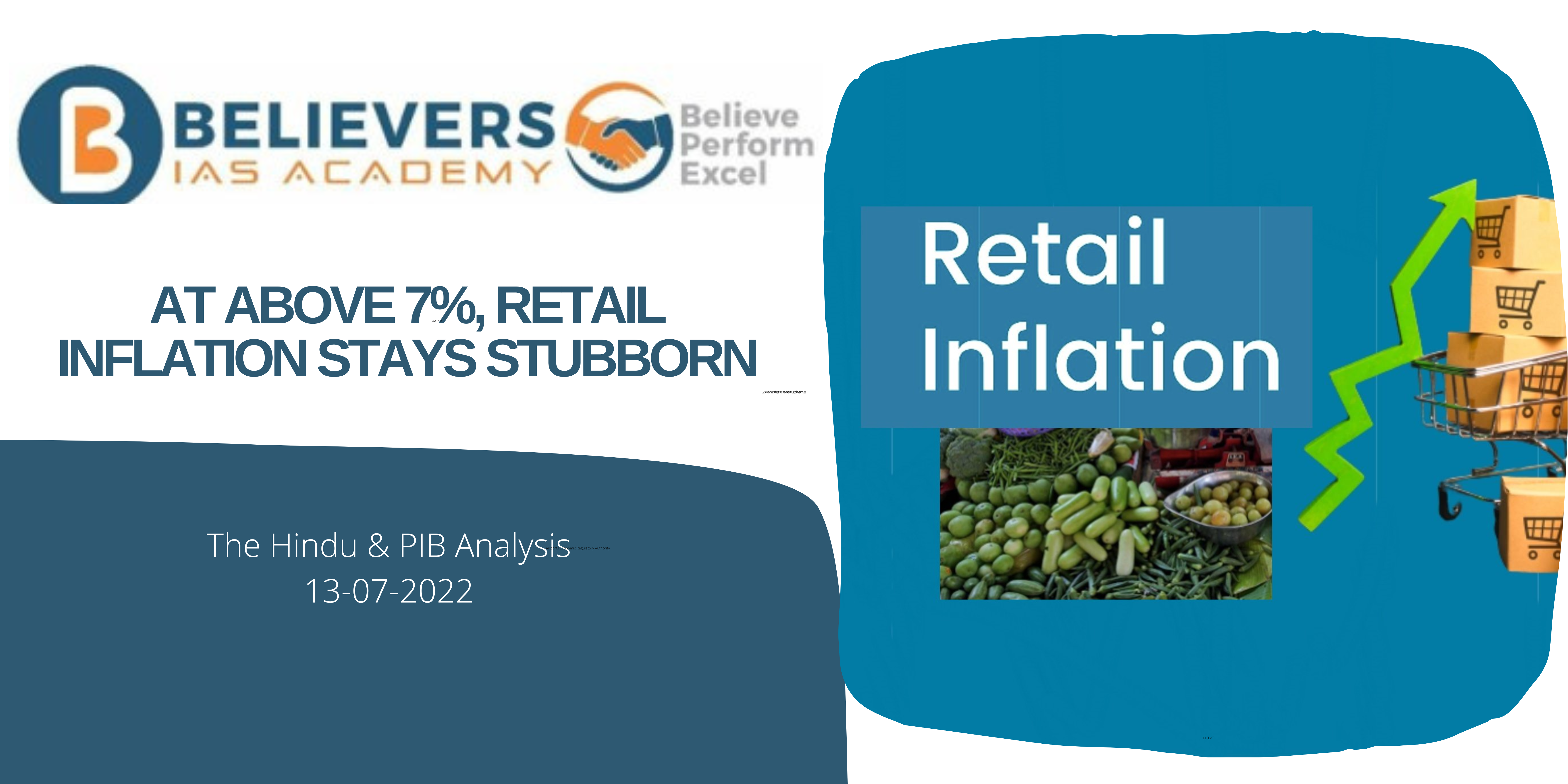At above 7%, retail inflation stays stubborn
For prelims
- Retail inflation is also called Consumer Price Index (CPI).
- CPI is released by the National Statistical Office (NSO) in the Ministry of Statistics and Programme Implementation.
There are 4 Types of CPI
- CPI for Industrial Workers (IW).
- CPI for Agricultural Labourer (AL).
- CPI for Rural Labourer (RL).
- CPI (Rural/Urban/Combined).
- CPI (IW), CPI (AL), CPI (RL), is compiled by Labor bureau but CPI(Rural/Urban/Combined) is compiled by NSO. CPI is used as Headline inflation.
- Wholesale Price Index (WPI) Published by the Office of Economic Adviser, Ministry of Commerce and Industry. Does not include services in its basket for calculation. The basket includes 3 major groups viz Primary Articles, Fuel and Power and Manufactured products. Maximum weightage for Manufactured Products while minimum given for Fuel and Power.
For Mains,
The current issue
- India’s retail inflation inched lower to 7.01% in June, from May’s 7.04%, but stayed stuck above the 7% mark for the third straight month.
- Price gains also exceeded the RBI’s upper tolerance limit of 6% for the sixth month.
Measures to control inflation.
- RBI is tasked with controlling inflation in India.
- The Reserve Bank of India (RBI) Act, 1934 was amended in May 2016 to provide a legal framework for implementing effective inflation-targeting measures.
- This changed RBI’s dual role of controlling inflation along with maintaining development and allowed them to fully concentrate on controlling inflation.
- RBI uses multiple methods to achieve this aim such as,
a. Quantitative Tools
- Statutory Liquidity ratio (SLR): To combat inflation, the RBI must raise the SLR. Higher SLR means banks need to keep a larger amount as liquid assets. As a result, the money available to be lend to the market declines, lending rates rise. Market liquidity will shrink, as a result, inflation is controlled.
- Cash Reserve Ratio (CRR): CRR works in a similar fashion as SLR where the only difference is that the reserve must be in for of cash. Also, this money is kept is a special RBI vault instead of with the banks themselves. This also results in a reduction in total liquidity available in the market.
- Repo Rate: Repo Rate is the rate at which RBI lends to commercial banks.Increase of repo rate results in reduction of borrowing of commercial banks from RBI. This in turn results in lower liquidity available in market.
- Reverse Repo rate: It encourages banks to park funds with the RBI rather than lend to the private sector by giving higher rates of interest.
- Marginal Standing Facility (MSF): Allows banks to borrow money with an interest rate above the repo rate. Increasing MSF rate will result in higher cost of business for banks and will result in lower liquidity supply in market.
- Open Market Operation (OMO): RBI directly intervenes and sells government bonds to reduce liquidity in market.
- Market Stabilisation Scheme (MSS): Similar to OMO, here also RBI sells government bonds to reduce liquidity. However, this is done to tackle a sudden rise in liquidity rather than normal inflation.
b. Qualitative Tools
- Fixed Margin Requirement: Margin Requirement refers to the percentage of value of a collateral that can be given out as loan. A higher FMR means for the same collateral, the money you can receive will be reduced.
- Moral Suasion: RBI can nudge the Banks to increase their lending rates so which will result in reduced liquidity in the market.
- Credit Control: RBI can direct banks to increase lending to a specific sector.This can help to increase production hence reducing supply side inflation.
Source : The Hindu




